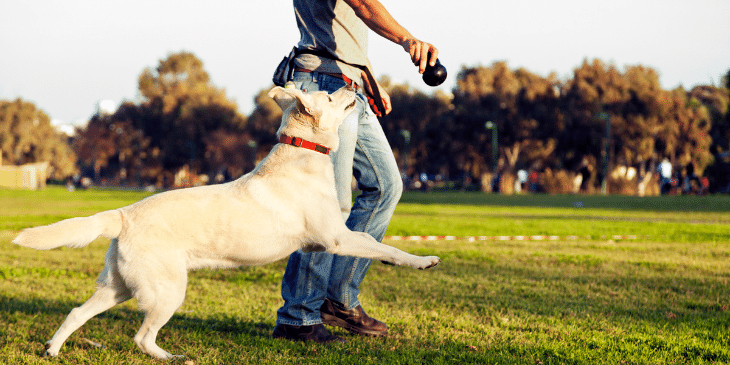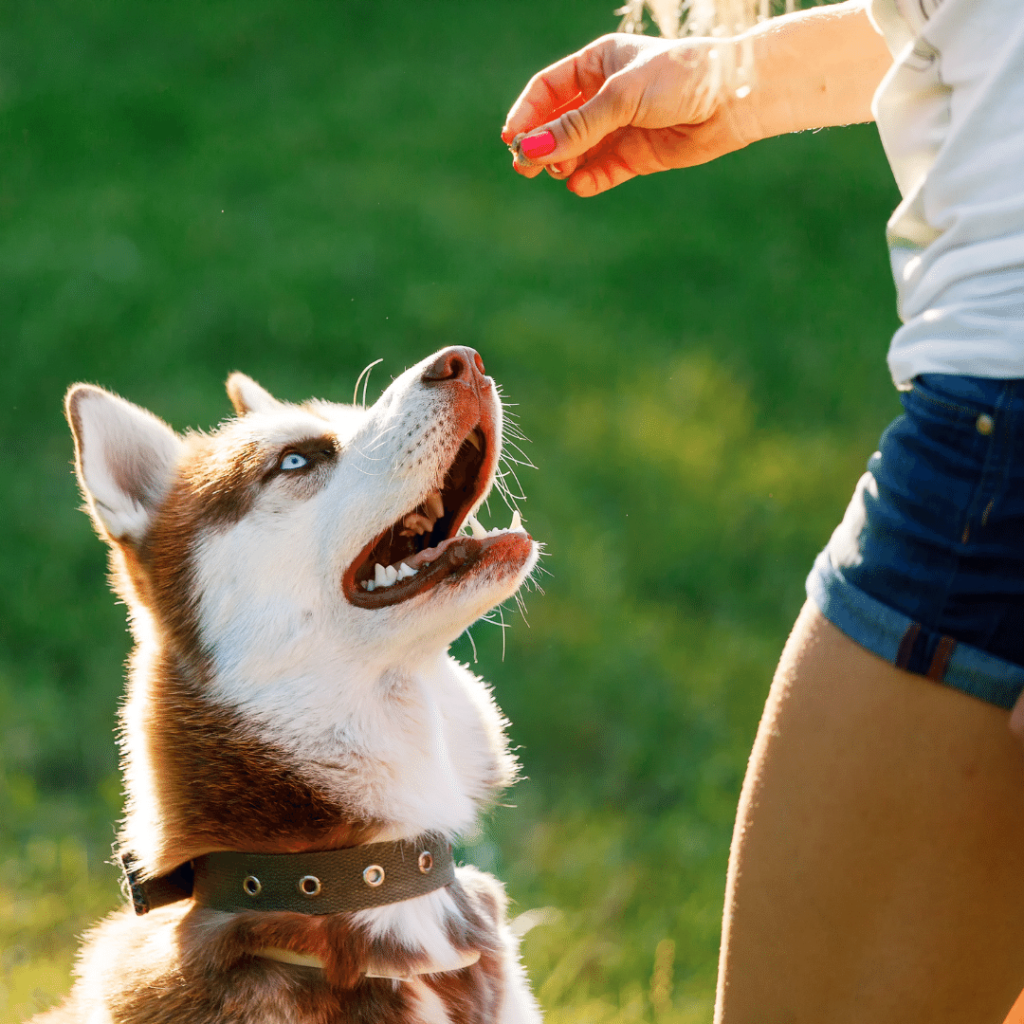7 Questions to Ask a Dog Trainer Before You Hire

Contents
Wondering what questions to ask a dog trainer before you hire? You’re not alone! Choosing the right dog trainer sets you and your pup up for success, while the wrong one might create additional issues that you’ll have to correct later.
Unfortunately, there are no licensing certification requirements for dog trainers. That means it’s up to you to ask the right questions and do your due diligence to ensure that you’re choosing a reputable trainer with the right qualifications.
Here are seven key questions to ask a dog trainer before you hire to increase the odds of a good experience for you and your fur baby.
7 Questions to Ask Before You Hire a Dog Trainer
1. How long have you been working with dogs, particularly in the fields of training and behavior?
Just like any other profession, skills and expertise are learned through experience. You want to know that the trainer has experience working with dogs to modify their behavior and make positive changes.
2. What type of dog training have you done?
Working with police K-9s, agility dogs, or search and rescue dogs isn’t the same thing as teaching basic obedience or modifying behaviors like anxiety and aggression. That’s not to say that a trainer can’t excel in more than one area, but it’s important to know that they have some expertise in obedience and behavior modification.
If your dog has issues like aggression, fear, or extreme anxiety, you want to ensure that the trainer you work with has successfully modified these behaviors for previous clients. In most cases, a reputable trainer will refer you to someone with the right qualifications if they’re not a good fit, but you should still do your diligence.
3. What formal education do you have in animal husbandry, behavior analysis, and learning theory?
Living and working with dogs for their entire life doesn’t cut it when it comes to education for a professional dog trainer. The trainer you choose should have a solid education in dog training, either through an apprenticeship with a professional trainer or preferably through some type of formal training or certification program.
If possible, choose a trainer that has a degree in animal behavior or psychology and canine husbandry, or certifications that demonstrate education in those areas. Having a solid understanding of these areas is crucial for correcting problem behavior in a positive way.
4. What methods do you use to correct negative behaviors and reinforce positive ones?
If the trainer answers this question by saying he establishes dominance over the dog, becomes the alpha, or establishes himself as leader of the pack, run the other way! A trainer with this philosophy will do more harm than good.
Research has proven time and time again that behavior correction and positive reinforcement are far more effective for correcting negative behaviors. A qualified trainer will use things like treats, praise, and other positive motivators that build up your dog’s self-confidence and reinforce positive behaviors.
5. What do you do when my dog makes a mistake or doesn’t listen?
Your trainer’s primary goal should be to teach you how to set your dog up for success. They should assess your dog’s environment and address situations that may be contributing to negative behaviors.
They should also be focused on teaching you and your dog alternate behaviors, as well as positive approaches for when your dog makes mistakes.
Physical and emotional punishment or intimidation are absolutely not acceptable under any circumstances. This type of correction is not only confusing and harmful to your dog, but it also causes additional anxiety that can worsen current issues or create new ones. Even something as simple as a squirt bottle or loud clapping can cause lasting damage.
6. How do you identify and react to stress, anxiety, or fear during trainer?
The right dog trainer should be constantly on the lookout for signs of stress, anxiety, or fear during training. Things like panting, whining, growling, pacing, flicking the tongue, clicking the teeth, or snapping can all indicate that your dog needs a break. The trainer should be willing to step back and reassess his approach before continuing the lesson.
7. Are results guaranteed?
Guaranteed results in a certain amount of time are a sure sign of a shady trainer. There’s never a definite result when you’re working with dogs, and a trainer who offers such a promise is likely using undesirable or dishonest methods.
You’re looking for a trainer who is committed to working with you and your dog until the appropriate results are achieved using appropriate methods. In addition, the trainer should look at you as an equal partner in the dog’s training to ensure successful, long-lasting changes.
Pre-Screening Potential Dog Trainers

There are some easy ways to pre-screen potential trainers before you even get them on the phone.
If a Google search for dog trainers in your area leaves you with pages and pages of results to sift through, there are some easy ways to pre-screen potential trainers before you even get them on the phone.
- Start by narrowing your search according to your primary goal. For example, are you looking for a puppy kindergarten class, a basic obedience group class, or private training sessions for specific behavior modification?
- Check out their website for a clear explanation of their training methods. If they don’t state them clearly, or they mention anything about pack leader, alpha, dominance, or calm/assertive energy cross them off the list. Trainers who use prong collars and pinch collars should also be avoided. The right dog trainer will be clear about using positive reinforcement and science-based training methods only.
- Check out their website for qualifications and professional memberships to dog training organizations. Members of the International Association of Animal Behavior Consultants (IAABC) are required to go through a rigorous certification process that includes coursework, in-person training, veterinary references, and written case studies. Other organizations that have stringent requirements for membership include the Certification Council for Professional Dog Trainers Directory (CCPDT) and the Karen Pryor Academy Directory (KPA). If your dog has major behavioral issues like severe anxiety or depression, look for a Veterinary Behaviorist (VB). This type of trainer will be the most qualified to correct complicated behaviors and is also licensed to prescribe medications if needed in extreme cases. Members of the Pet Professional Guild (PGA) are committed to using force-free techniques to strengthen the pet/owner bond and build trust and respect. This is a great start, but it’s important to know that the application process for PGA is very simple and they don’t do anything to verify the skill level or practices of their members.
- And finally, searching online for reviews from previous clients is a good way to find out more information. If there are a lot of negative reviews or complaints to the Better Business Bureau, look elsewhere for a qualified trainer.
Final Thoughts
When you ask a potential trainer these questions, you want quick, confident answers. They should come across as a competent, passionate professional. You also want to choose someone you genuinely enjoy talking to because it’s super important that you can work well together.
Once you get to this point, ask about pricing and how long you can expect training to take. Remember, guarantees are not a good sign, but flexibility and willingness to reassess as you go are crucial.
